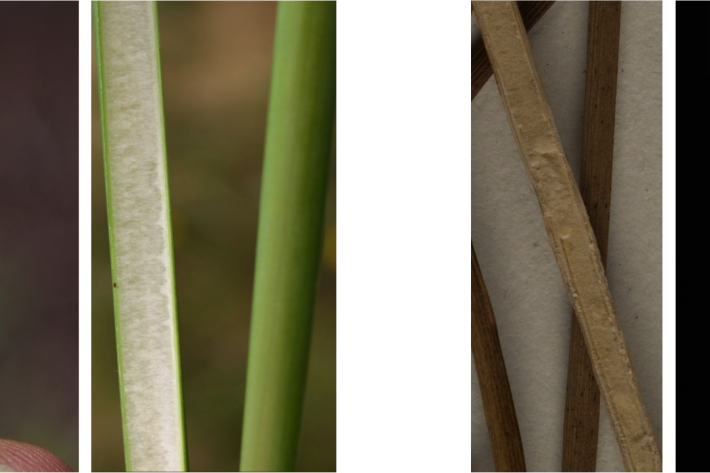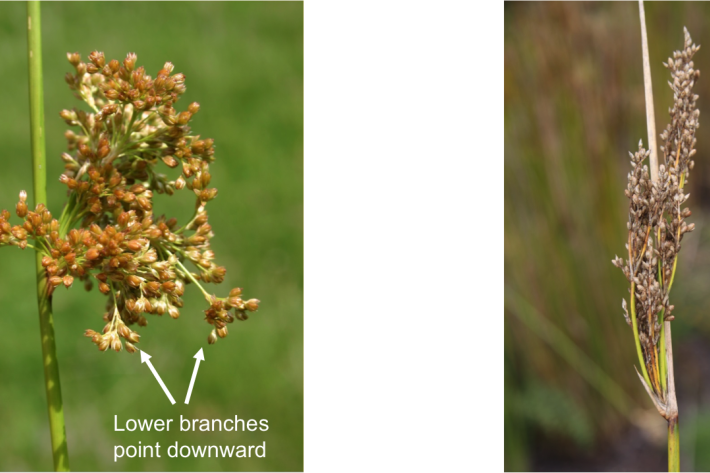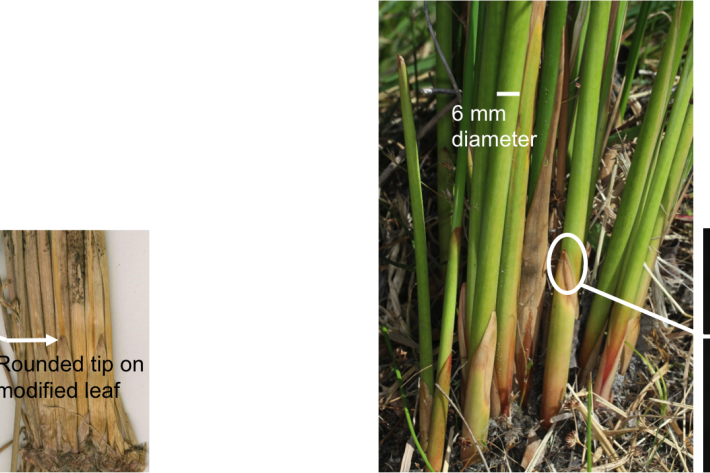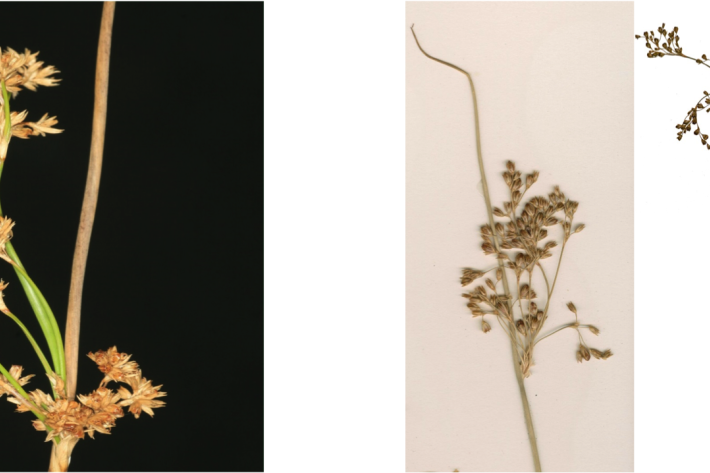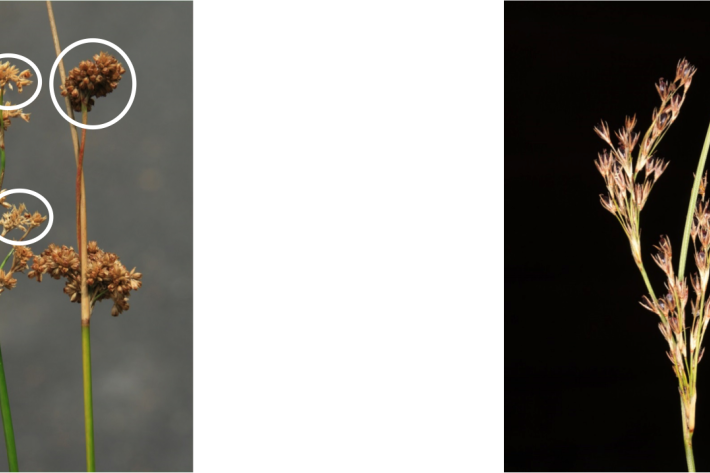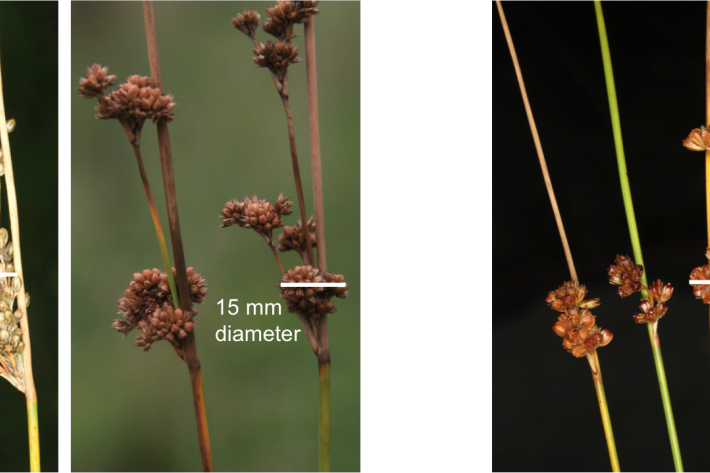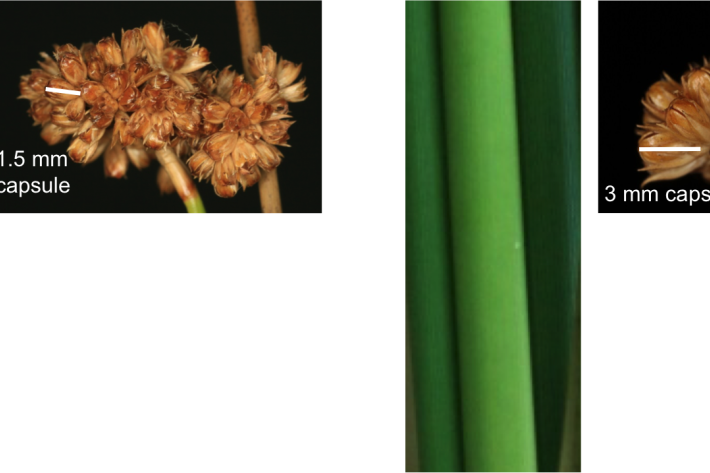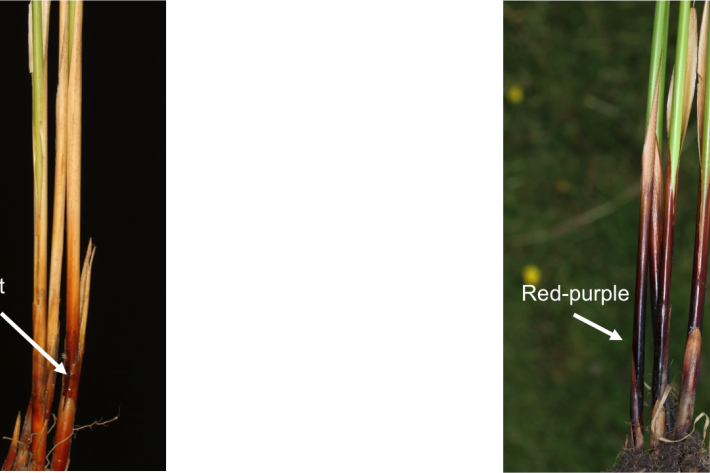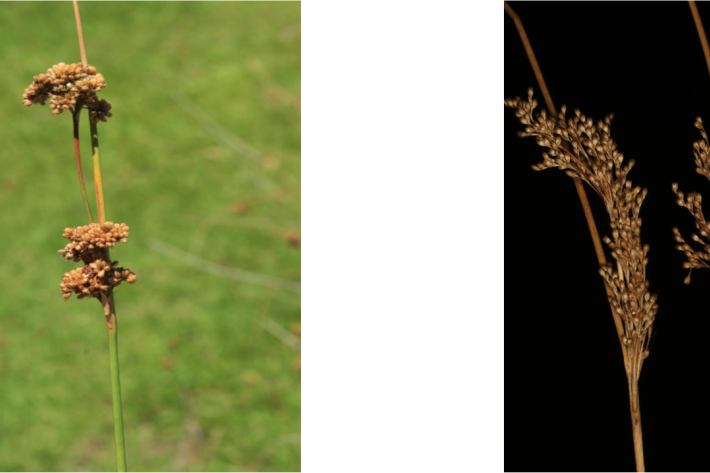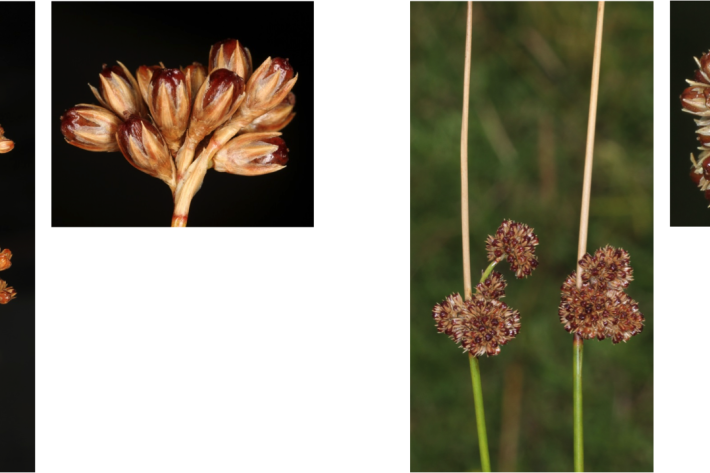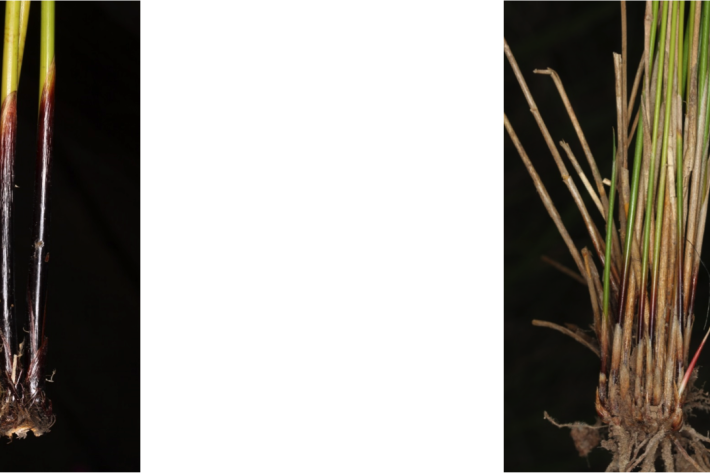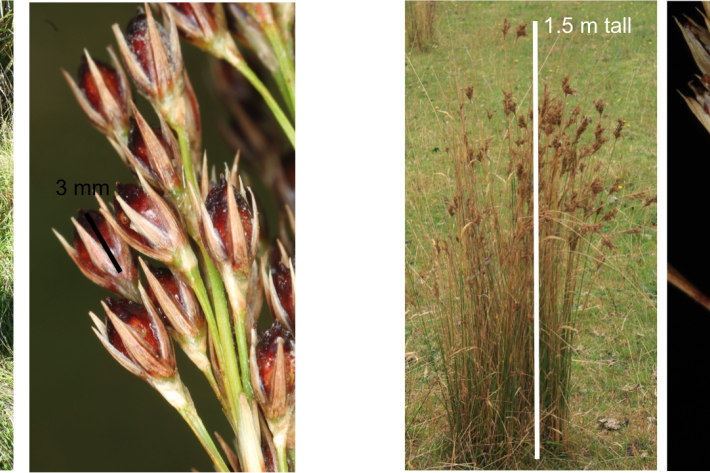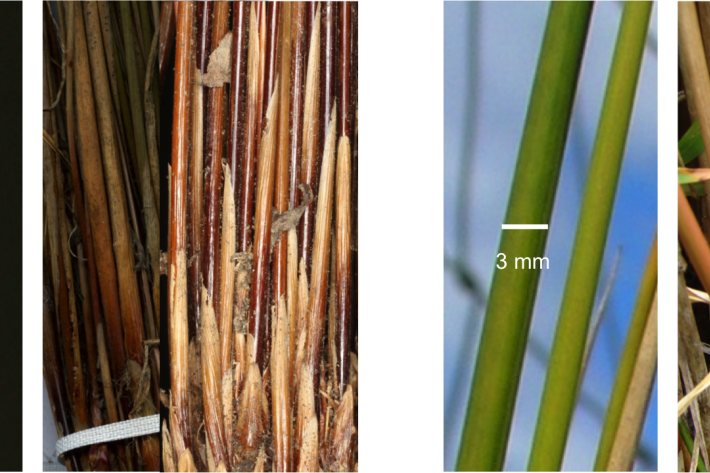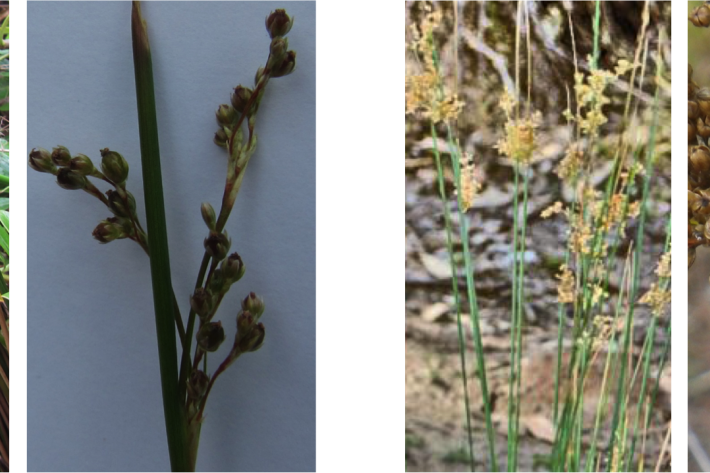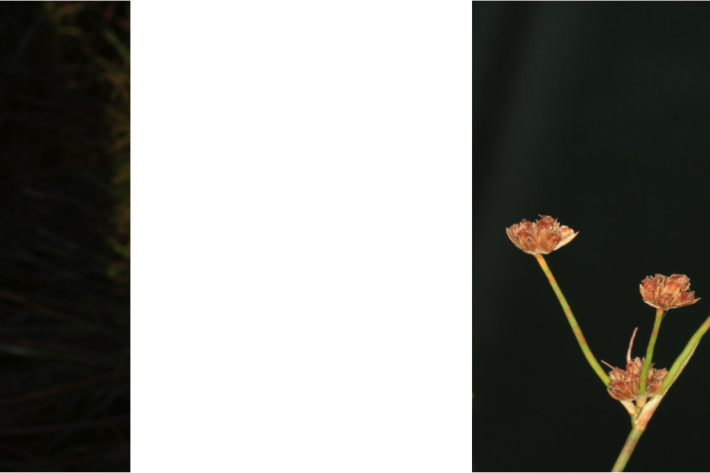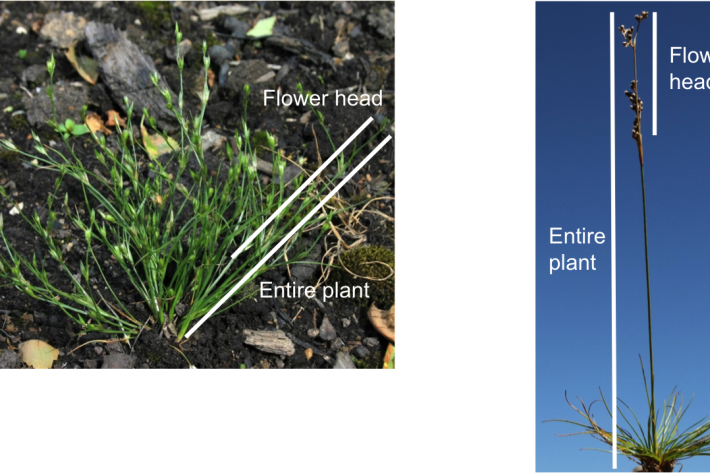Rushes (family Juncaceae) are a common component of New Zealand wetland vegetation and species within this family appear very similar.
With over 50 species, Juncus are the largest component of the New Zealand rushes and are notoriously difficult for amateurs and professionals alike to identify to species level.
This field identification guide and accompanying factsheets have been developed to enable users with a diverse range of botanical expertise to identify Juncus to species level. The best time for collection, survey or identification is usually from December to April as mature fruiting material is required to distinguish between species. Factsheets (hyperlinked and available below) developed for each species provide more detailed information on descriptions for both native and exotic species, distribution within New Zealand, habitat, similar species and photographs of key features.
Using this guide
In preparing this field identification guide and factsheets we have used everyday language and have kept botanical terms to a minimum. Any technical terms have an alternative, plain English, wording and are identified on accompanying photographs or images. Each step of this key involves two choices, each described and illustrated with image(s) of the characteristic in question. It is therefore important to have mature, fruiting material to use this key.
With your specimen in hand, start at the top left image in this gallery. On each following page, our interactive HTML key will give you two possible choices. The choices you make will end up in a species identification, and link to a PDF factsheet containing more detailed information.
Start identifying your Juncus sample using our HTML key
You can also download a PDF version of the key, as well as combined and individual fact sheets for all the Juncus species in the key.
Download the Juncus key as a single document [PDF 14MB]
Download Juncus species factsheets
Taxonomic treatment of Juncus in this key generally follows the family monograph by Kirschner (2002). Species features and descriptions were taken from Kirschner (2002), as well as the New Zealand Flora volume III (Healy & Edgar, 1972).
- Kirschner J (2002a) Juncaceae 2: Juncus subg. Juncus, Species Plantarum: Flora of the World Part 7 (336 p). Australian Biological Resources Study, Canberra.
- Kirschner J (2002b) Juncaceae 3: Juncus subg. Agathryon, Species Plantarum: Flora of the World Part 8 (192 p). Australian Biological Resources Study, Canberra.
- Trevor James, AgReserach / Allan Herbarium, Landcare Research
Stems are smooth to the touch, or have more than 30 ridges
- Trevor James, AgResearch
Pith is cobwebby
- Allan Herbarium, Landcare Research / Kerry Bodmin, NIWA
Lower branches point upwards
- Trevor James, AgResearch / Allan Herbarium, Landcare Research / Auckland Museum Herbarium
Pith is not cobwebby, and stems are wiry
- Trevor James, AgResearch
Pith in stems is interrupted or lacking
- Trevor James, AgResearch
Pith is interrupted
- Trevor James, AgResearch
Flowers are grouped at the ends of branches
- Trevor James, AgResearch
Flower heads are open or have a cluster 10 mm or more in diameter
- Trevor James, AgResearch
Stems are not bright green, and capsules are 2-3.5 mm long
- Trevor James, AgResearch
Basal sheaths are shiny and red or chestnut brown at their base
- Kerry Bodmin, NIWA / Trevor James, AgResearch
Basal sheaths are very dark red-purple to black or dull brown at their base
- Trevor James, AgResearch
Flower heads have a cluster 10 mm or less in diameter, often with smaller clusters above
- Trevor James, AgResearch
Stems are less than 1.5 mm in diameter
- Trevor James, AgResearch
Flowers are evenly-distributed along branches
- Trevor James, AgResearch
Basal sheaths are dark purple, or red-purple to black
- Trevor James, AgResearch / Allan Herbarium, Landcare Research / Forest and Kim Starr
Basal sheaths are pale to dark brown, or pinkish to red-brown
- Auckland Museum Herbarium / Trevor James, AgResearch
Stem ridges are distinct, and base sheaths are pink or red-brown in colour
- Kerry Bodmin, NIWA / Bush Heritage Australia / Paul Champion, NIWA
Stem ridges are not distinct, and base sheaths are golden to dark straw brown
- Trevor James, AgResearch
Leaves originate at the base and up the stem, and are usually narrow and often wiry
- Trevor James, AgResearch
Flowers are evenly distributed on branches/branchlets

